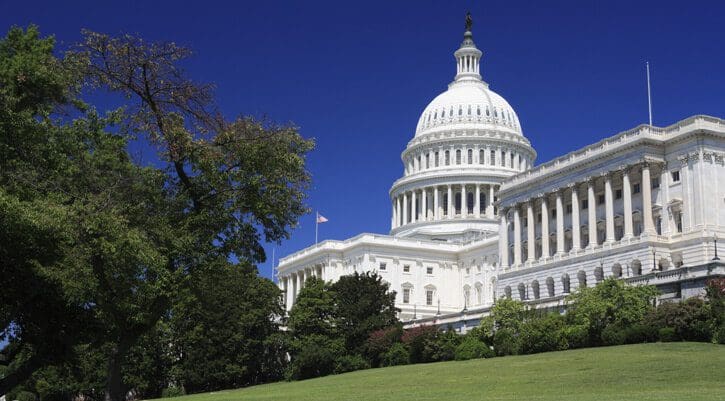By Mike McWherter, JD / Chief Compliance Officer PenChecks Trust®
I learned a long time ago that laws can be like sausage. They may look great but you don’t want to see them being made.1 That may also help explain how we get some of the unusual, sometimes pithy acronyms used for new legislation.
The Setting Every Community Up for Retirement Enhancement Act of 2019, better known and more easily referred to as the SECURE Act, was signed into law just before Christmas 2019. It made important changes that helped businesses more easily provide retirement plans for their employees while also helping them save for retirement.
Fast forward to 2022 and Congress has two bills picking up where the SECURE Act left off. In the House we have the Securing a Strong Retirement Act of 2021 (the SSRA), but better known as “SECURE Act 2.0”. Meanwhile, the Senate is working on the Retirement Security and Savings Act (RSSA).
Both pieces of legislation contain solid ideas that will help Americans save and be better prepared for retirement. More than half of the Baby Boomer generation have already reached age 65 or older, with 10,000 Boomers hitting retirement age every day.2 Expanding access to retirement plans and increasing the amounts Americans can save for retirement are critical policy objectives.
We’ll unpack more details and updates in future blog posts, but for now here’s a summary of what each proposal contains.
SECURE Act 2.0
- Mandatory Automatic Enrollment. For defined contribution plans (401(k)s, 403(b)s, PSPs, etc.) established after 2021, new employees would be automatically enrolled, starting at 3% pretax contributions. As with most plan regulations, contribution caps, exceptions and opt-outs apply.
- Expands “Catch-Up” contributions. $10,000 for participants age 62 – 64. These catch-ups could be “Rothed” so Uncle Sam gets his tax revenue sooner than later.
- Required Minimum Distributions (RMDs). The SECURE Act raised the beginning age from 70 ½ to age 72. The SECURE Act 2.0 would raise it again to age 73 for 2022, age 74 in 2029, and age 75 in 2032.
- Part-Time Employees. The SECURE Act 2.0 accelerates the participation of long-term part-time employees by reducing the eligibility period from three years to two.
- Student Loan Matching. Would allow employers to make matching contributions based on the employee’s student loan payments.
- Expanded Self-Correction of Plan Administration Errors. Includes plan loans and elective deferral errors.
Secure Act 2.0 also increased awareness of the Saver’s Credit to low and moderate income employees while continuing the effort to make 403(b) plan design more like 401(k) plans. And it authorizes creation of a government-operated lost and found database for retirement accounts. The government has tried this before, unsuccessfully. A free, private sector lost and found database – the National Registry of Unclaimed Retirement Benefits (NRURB) – has operated successfully for several years. Powered by PenChecks, the database was included in the Department of Labor’s January 2021 Missing Participant Best Practices guidance.
Retirement Security and Savings Act (RSSA)
Includes many proposals found in or similar to the SECURE Act, but there are differences:
- Catch-Up contribution provisions would be expanded to $10,000 for all participants over age 60.
- Automatic enrollment contributions start at 6% of pay.
- Expands the Saver’s Credit income thresholds rather than just increasing awareness of the Saver’s Credit.
- In addition to increasing the beginning age for RMDs the same as the SECURE Act, the RSSA allows an exemption from this requirement for persons with $100,000 or less in retirement savings.
- Allows Roth IRAs to be rolled into retirement plans [401(k)s, 403(b)s].
The Politics – Whose Ox Is Getting Gored?3
Maybe nobody’s, but there’s no guarantee. Nonetheless, retirement savings and related matters continue to be issues that generate strong bipartisan support in Congress and the White House. So there’s a reasonable chance that SECURE Act 2.0/RSSA will pass.
Regardless, there is still the legislative process itself, which can get derailed by unrelated issues despite the best intentions of leaders on both sides of the aisle. Both the House and Senate must pass either one or both bills. Then each chamber’s versions must go through the reconciliation process to make sure the House and Senate don’t pass different versions of the same Act before sending it to President Biden for signing. Other circumstances can also derail the process – domestic or international crises, mid-term elections, etc.
Both bills contain many solid provisions and retirement plan improvements. Both also have bipartisan sponsorship. I’m cautiously optimistic that the new law will be “GID”, Getting It Done to improve the retirement savings of all Americans.
1 This quote and its variations are generally attributed to Otto von Bismarck.
2 Jeff Hoyt, “The Baby Boomer Generation”, SeniorLiving.org, Aug. 9, 2021
3 An idiom, the earliest reference I have found is The Holy Bible, Exodus 21:35. (NRSV)
Mike McWherter JD, is Chief Compliance Officer for PenChecks, Inc. and PenChecks Trust Company of America, a leader in outsourced retirement plan distribution processing and Automatic Rollover/Missing Participant IRAs and related services. With 30 years of combined legal, financial institution and ERISA plan provider compliance experience, he provides guidance and oversight for all compliance matters, supervises regulatory exams and audits, and coordinates between outside counsel, management and the board of directors.

0 Comments